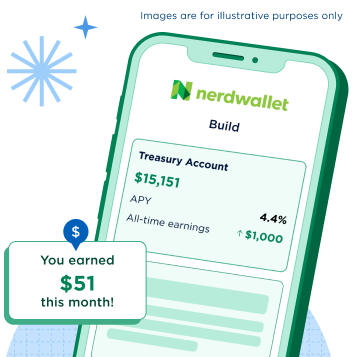Tax Relief and Resolution: 5 Ways to Deal With Tax Debt
If you're behind on taxes or finding it hard to keep up with your IRS payments, here are five tax relief options that could help.

Many, or all, of the products featured on this page are from our advertising partners who compensate us when you take certain actions on our website or click to take an action on their website. However, this does not influence our evaluations. Our opinions are our own. Here is a list of our partners and here's how we make money.
If you're behind on your taxes or struggling to cope with a tax bill, you might be wondering what options are available to you. Five common tax debt relief programs are available for people who need help with a federal tax bill, back taxes, a tax penalty and more.
Earn 3.68% APY by investing in U.S. Treasury Bills*
Maximize your cash by investing in low-risk, government-backed T-Bills. All the work is done for you — just make the deposit and watch your money grow.

What is tax debt relief?
The term “tax relief” can refer to a number of things within the world of taxes. Broadly speaking, any measure or incentive that helps taxpayers legally reduce their tax bills can be considered tax relief in terms of policy. This can include popular breaks, such as tax credits, tax deductions and even stimulus checks or rebates.
Tax relief is also a phrase frequently used by the IRS to talk about certain tax deadline extensions for taxpayers who live in federally declared disaster areas or who were affected by certain events, such as hurricanes or floods
In the realm of tax trouble, tax relief takes on a different meaning. In this context, it refers to certain programs or policies that help taxpayers with delinquent or overdue tax bills manage, pay off, or even settle their tax debt or back taxes. Many tax debt relief programs below are part of the IRS’ Fresh Start program, which aims to streamline and ease the burden of debt collection and payoff for taxpayers.
5 tax relief options
1. IRS payment or installment plans
If you need more time to pay your tax bill, check to see if you qualify for an IRS payment plan. A payment plan will allow you to pay back your overdue tax bill (plus accrued interest and fees) over a period of time. The IRS offers two types of installment plans: short-term and long-term.
Here are a few other things to know about getting tax relief via an IRS payment plan:
A payment plan doesn’t get you out of interest for late payment — that accrues until your balance is zero. But getting on a plan can reduce the failure-to-pay fee by half.
If you owe more than $25,000, you have to make your payments via automatic withdrawals from a bank account.
If you make your payments with a debit card, credit card or digital wallet, you'll have to pay a processing fee. The charge for debit cards runs from about $2 to $2.50 per payment; the charge for credit cards is about 2% of the payment.
Lower-income applicants may be able to get their setup fees waived.
» Next steps: Learn more about IRS payment plans and how to set one up
2. Offer in compromise
Another option for tax relief is available through what’s called an "offer in compromise." This lets you settle your back taxes with the IRS for less than you owe. According to the IRS, it may be an option if you absolutely can’t pay your tax debt or if doing so creates a financial hardship.
But it's much harder to get the IRS to sign off on an offer in compromise than on a payment plan. The IRS typically accepts fewer than half the requests. You should explore other options before turning to an offer in compromise.
To determine whether you qualify for tax relief via an offer in compromise, the IRS considers your ability to pay, your income and expenses, and how much you have in assets.
Here are a few things to know about getting tax relief via an offer in compromise:
There’s a $205 application fee and you'll need to make an initial payment — both of which are typically nonrefundable.
Low-income taxpayers might be able to get this application fee and initial payment waived.
You have to be current on all your tax returns. If you haven’t filed a tax return in a while, you may not qualify.
The IRS can file or keep tax liens in place until it accepts your offer and you’ve fulfilled your end of the deal.
You don’t qualify if you are in an open bankruptcy proceeding.
You can hire a qualified tax professional to help you do the paperwork, but it’s not required.
Once you file your application, the IRS suspends collection activities.
» Next steps: Learn more about offers in compromise and who qualifies
3. "Currently-not-collectible" status
If you can't pay your taxes and living expenses within reason, you can ask the IRS to put your account in what’s called "currently not-collectible" status. You need to request this delay in collection, and the IRS may ask you to complete a Collection Information Statement or a Collection Information Statement for Wage Earners and Self-Employed Individuals form to verify the state of your finances. You'll need to supply information about your monthly income and expenses on that form.
Here are some things to know about applying for CNC status:
It's temporary — the IRS may review your income annually to see if your financial situation has improved.
Being deemed "currently not collectible" doesn't make your tax debt go away.
The IRS can still file a tax lien against you.
Earn 3.68% APY by investing in U.S. Treasury Bills*
Maximize your cash by investing in low-risk, government-backed T-Bills. All the work is done for you — just make the deposit and watch your money grow.

4. Penalty abatement
If you have an otherwise clean record but get hit with an IRS penalty for failing to file or failing to pay, you may be able to request a reversal of the penalty and associated interest through what’s called a “first-time penalty abatement.” To qualify for this type of relief, you’ll typically have to meet certain criteria, including having filed tax returns for the last three years if you were required to and not having had any IRS penalties imposed during the past three years.
The IRS also offers penalty relief for reasonable cause, which can help if you were unable to timely file because of a certain life circumstance, such as a serious illness, family death, or a fire or another natural disaster. To qualify, you'll need to provide evidence and documentation, such as a hospital or court record, to substantiate the event.
5. Hiring a tax relief company
Tax relief companies typically offer to help taxpayers in distress. Some of them can be legitimately helpful if you’re confused about the process or need help filling out forms, but be wary of offers that seem too good to be true, such as promises to get money back or eliminate your debt entirely. The Federal Trade Commission encourages taxpayers with tax debt to first try to settle their situation directly with the IRS. If you choose to work with a tax relief company, remember:
The IRS rejects most applications for offers in compromise.
If a tax relief company loses or delays your application, you’re still responsible for your tax debt, interest, and penalties with the IRS.
You may have to pay an upfront fee to the tax relief company, and it may be a percentage of the tax you owe. That fee may be higher than what you end up saving on your tax bill if the IRS accepts your offer in compromise (and it might not be refundable if the IRS rejects your offer).
Some tax relief companies will charge you a fee to determine how much you owe the IRS, set up a payment plan or see if you qualify for an offer in compromise. But these are things you can often do yourself for free:
Find out whether you have an outstanding balance with the IRS and how much it is. You can get that (and up to five years of your payment history) at IRS.gov/account.
Get your tax records. The IRS provides fivetypes of free tax transcripts that let you peek at its records on you. For example, you can see most line items from your tax returns processed during the last three years or get basic data such as your marital status, how you paid and your adjusted gross income for the current tax year and for up to the last 10 years. (Note that a tax transcript isn’t the same as a copy of your tax return.)
Set up a payment plan with the IRS, as described above.
See if you qualify for an offer in compromise. The IRS' online offer in compromise pre-qualifier tool can help you determine whether the program might be for you. Remember, the tool is just the beginning of the journey — you'll still need to complete a formal application.
» MORE: How to make an IRS payment








